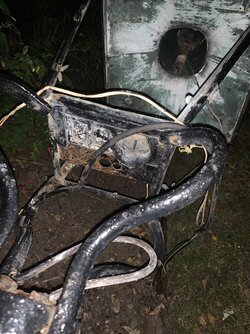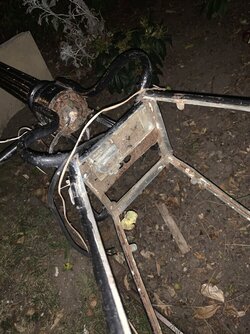I am going to be installing this lamppost and replying the cable. Only thing is I’m a bit unsure on how to light this old bugger up. I was thinking to send some ho7rn 3 core cable up there and into a bc lamp holder but it doesn’t seem right.
Then I had a look at some images of these lamppost on google and see there are poles which attach to the lamppholder such as this one: Black Victorian Lantern 70cm | Black Country Metalworks - https://www.blackcountrymetalworks.co.uk/victorian-lantern-in-black-medium.htm?gclid=EAIaIQobChMIkdDm75nn6gIVku5RCh2vBwcvEAQYBiABEgIw0PD_BwE
What if I cut a small piece of pvc conduit and put an adaptor on the end and screwed into a brass bc lamp holder? I’m thinking that I should use a 3 core flex for the brass lamp holder as it will probably need to be earthed and another 3 core flex but only use the green/yellow core to earth the base of the lantern so theoretically the whole post will be earthed? The customer is going to do some work on the lamppost such as sanding down, painting and adding some glass.
Thanks in advance!
Then I had a look at some images of these lamppost on google and see there are poles which attach to the lamppholder such as this one: Black Victorian Lantern 70cm | Black Country Metalworks - https://www.blackcountrymetalworks.co.uk/victorian-lantern-in-black-medium.htm?gclid=EAIaIQobChMIkdDm75nn6gIVku5RCh2vBwcvEAQYBiABEgIw0PD_BwE
What if I cut a small piece of pvc conduit and put an adaptor on the end and screwed into a brass bc lamp holder? I’m thinking that I should use a 3 core flex for the brass lamp holder as it will probably need to be earthed and another 3 core flex but only use the green/yellow core to earth the base of the lantern so theoretically the whole post will be earthed? The customer is going to do some work on the lamppost such as sanding down, painting and adding some glass.
Thanks in advance!




 lol
lol





